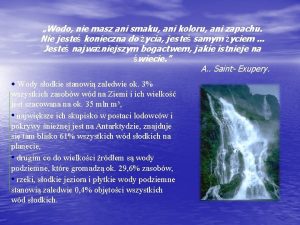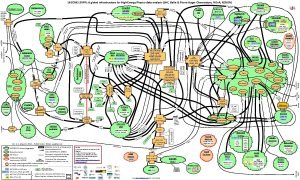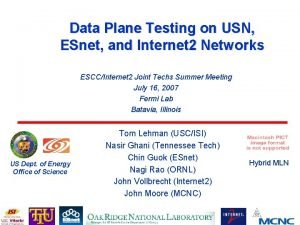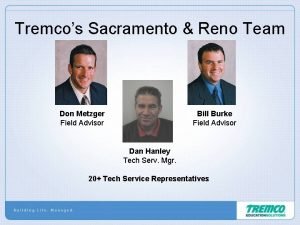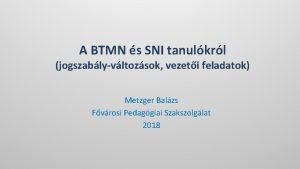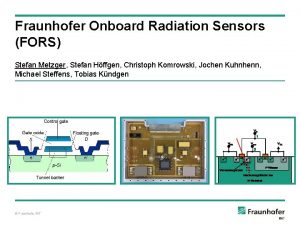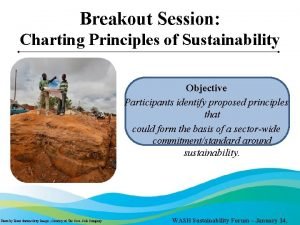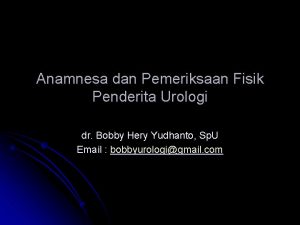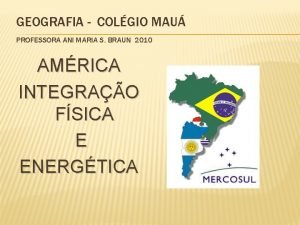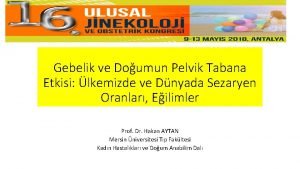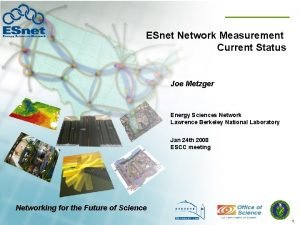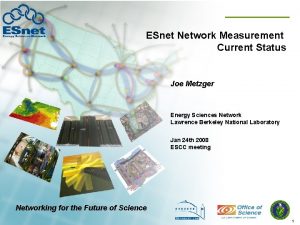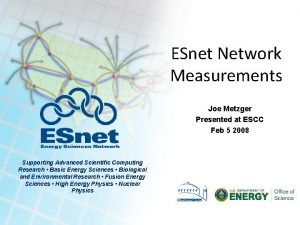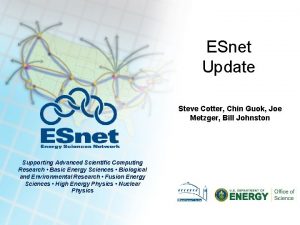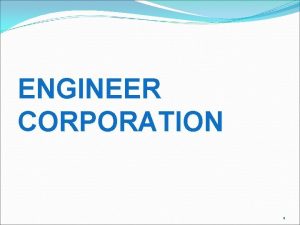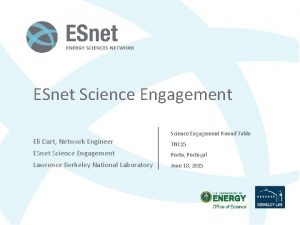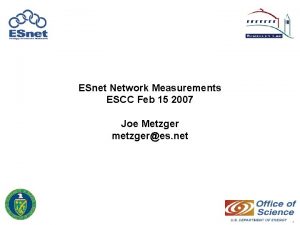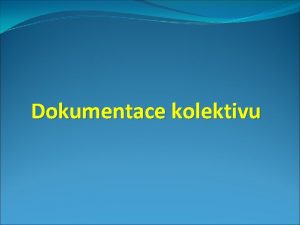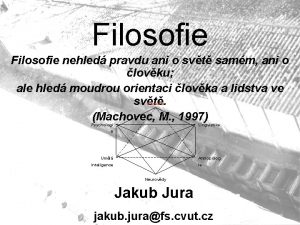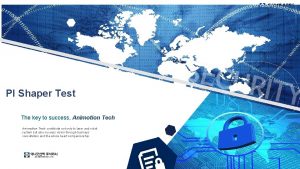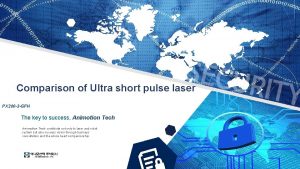ANI ESnet 5 Joe Metzger Network Engineer ESnet















- Slides: 15

ANI & ESnet 5 Joe Metzger, Network Engineer ESnet Network Engineering Group ESCC Fairbanks, AK July 13, 2011

Where are we going: • Understanding the Capabilities • Assets • Services • Building the networks • Dark Fiber Network • Optical Transport Network • ANI Phase 1 • ANI Phase 2 • Transition to ESnet 5 • Timeline 9/6/2021 Lawrence Berkeley National Laboratory 2 U. S. Department of Energy | Office of Science

Assets: 3 Separate Networks! Dark Fiber Network • Long Haul fibers available for ANI Testbed & disruptive research uses for the near future • May be used for the next generation network when we outgrow the Optical Transport Network • Provides point to point wave services for IP, SDN & Testbed purposes • Up to 44 100 G waves on the backbone • Internet 2 DF, shared chassis & amps, ESnet cards for our waves • Up to 88 100 G waves on the CHI and SFBay Express • ESnet equipment on ESnet DF, managed by Internet 2 & Level 3 • Up to 61 100 G waves on the ORNL Express • Level 3 owned equipment on Level 3 DF 100 G Routed network • Engineered to support science applications at 100 G speeds 9/6/2021 Lawrence Berkeley National Laboratory 3 U. S. Department of Energy | Office of Science

Services • Routed Network • Traditional IP Services • Current OSCARS/SDN services and on-demand circuits • Minutes to provision, services last minutes to years • Optical Transport Network • Point to Point long-lived circuits • Weeks to months to provision, services last until components redeployed • Provisioning circuits will require physically deploying transponders • Limited SONET like re-routing around failures in the express networks. Not likely in the WAN due to the regen requirements. • Dark Fiber Network • Provisioning services will require equipment at end-points, regen and amp huts, installing transport gear, etc. This will take months. 9/6/2021 Lawrence Berkeley National Laboratory 4 U. S. Department of Energy | Office of Science

Dark Fiber Network 9/6/2021 Lawrence Berkeley National Laboratory 5 U. S. Department of Energy | Office of Science

Optical Transport Network 9/6/2021 Lawrence Berkeley National Laboratory 6 U. S. Department of Energy | Office of Science

Optical Nodes Add-Drop sites will have 1 or more Ciena 6500 chassis. Waves can be regenerated at adddrop sites if required. Regen required every 900 – 1600 km depending on transponders & power budgets. SFBay & Chicago express nodes at sites will have: • • 1 32 slot Ciena 6500 Chassis Sentry PDU Rectifier Plus all the current ESnet equipment. 9/6/2021 Lawrence Berkeley National Laboratory 7 U. S. Department of Energy | Office of Science

ANI Phase 1 9/6/2021 Lawrence Berkeley National Laboratory 8 U. S. Department of Energy | Office of Science

ANI Phase 2 9/6/2021 Lawrence Berkeley National Laboratory 9 U. S. Department of Energy | Office of Science

ESnet 5 The general plan is: • Build ANI Phase 1, test it, declare success! • Build ANI Phase 2 • Merge ANI Phase 2 and ESnet 4 to create ESnet 5 But, it probably will not happen quite this cleanly • SC 11 • Space & Power constraints • Some users will want to utilize ANI for traffic that is currently using ESnet 4. 9/6/2021 Lawrence Berkeley National Laboratory 10 U. S. Department of Energy | Office of Science

ESnet 5 Conceptual design is done, detailed design is not finished. Significant points from ESnet 5 Conceptual Design • It will look a lot like the ANI Phase-2, with the addition of the rest of the sites & exchanges. • We will be reducing the number of routers in the network compared to ESnet 4 Only 1 100 G router in a hub • No 100 G routers at the sites (temporary exception for ANI Testbed) • • Many hubs will have only 1 router. • Configuring the SFBay Express Routed Links in a dual star instead of a shared ring Trade off larger number of shared links for smaller number of dedicated links • Will be augmented as necessary with additional point-to-point capacity • May be able to use optical protection for individual circuits • Sites can decide how much of their circuits are available for SDN. • 9/6/2021 Lawrence Berkeley National Laboratory 11 U. S. Department of Energy | Office of Science

SFBay Express Optical Network 9/6/2021 Lawrence Berkeley National Laboratory 12 U. S. Department of Energy | Office of Science

SFBay Express Routed Network Concept Evolution 9/6/2021 Lawrence Berkeley National Laboratory 13 U. S. Department of Energy | Office of Science

ESnet 5 Some of the open questions: • 100 G Ciena transponders & 100 G pluggable optics (CFP) issues. • What is the optimal configuration for ESnet equipment on a site that is on a metro ring? • What is the best layer for protection & reliability? • Do we want 0, 1 or 2 ESnet routers at a site? • How valuable are slower line-rate backup paths? • If a site has a 100 G connection, is a divers 10 G backup connection useful? • How should we manage 100 G traffic so it doesn’t saturate 10 G links? • Who should be managing that? • When will the fiber builds be completed? • Budget Issues 9/6/2021 Lawrence Berkeley National Laboratory 14 U. S. Department of Energy | Office of Science

Target Timeline 1. Transport Contract signed in June (Dark fiber + Optical Networks) 2. Router Contract should be signed in July 3. On-Site meetings with the Phase 1 ANI Sites starts next week to deal with dark fiber installation issues. On-Site meetings with other SFBay & Chicago Express sites will follow quickly. 4. The portion of the Optical Transport network required for the ANI Phase 1 will be ready for provisioning wave services by end of August 2011 5. ANI Phase 1 completed ASAP & before end of December 2011! 6. The rest of optical transport network completed by July 2012 7. ANI Phase 2 completed by July 2012 8. ESnet 5 transition complete before November 2012 9/6/2021 Lawrence Berkeley National Laboratory 15 U. S. Department of Energy | Office of Science
 De ani si ani cadeti in hau
De ani si ani cadeti in hau Ani woda ani dropsy nie smakuja tak jak koksy
Ani woda ani dropsy nie smakuja tak jak koksy Esne esnet
Esne esnet Esnet internet
Esnet internet Chris metzger md
Chris metzger md Amanda metzger md
Amanda metzger md Metzger field
Metzger field Sni kategóriák
Sni kategóriák Maria metzger
Maria metzger Dr. stefan metzger
Dr. stefan metzger Palo alto networks certified network security consultant
Palo alto networks certified network security consultant Ani shehigian
Ani shehigian Fistula ani tanpa operasi
Fistula ani tanpa operasi Ani
Ani Succus lig
Succus lig Hiatus levatorius
Hiatus levatorius

